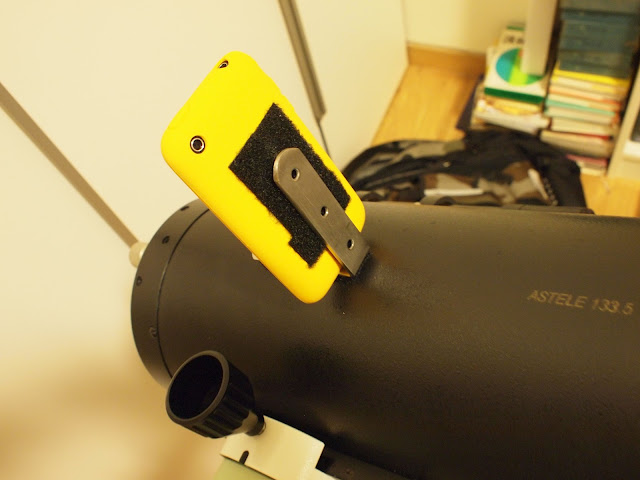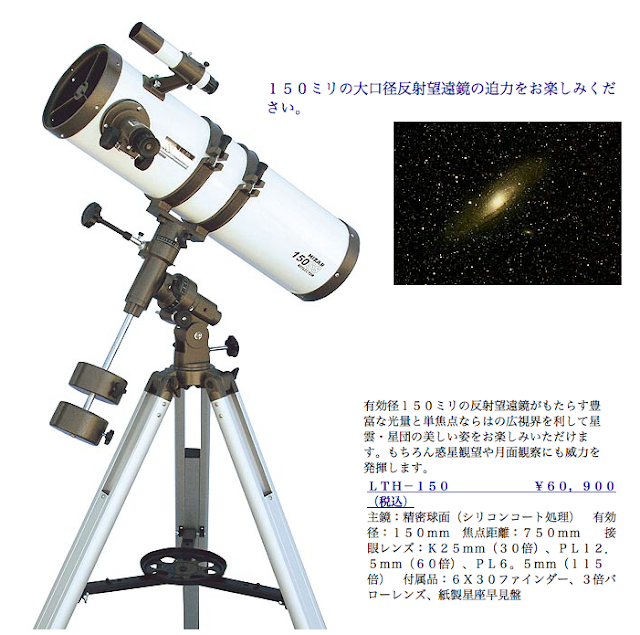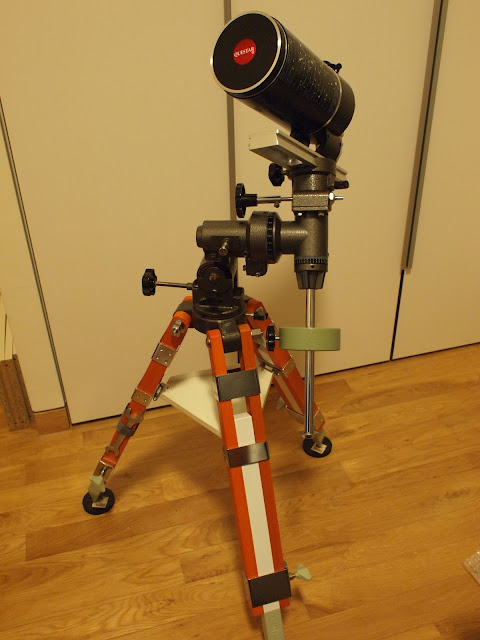I sold my much-used Vixen Porta after replacing it with a Takahashi TG-L, which can take larger scopes. This is a nice alt-az mount for quick-peeks, but star-hopping can be time-consuming. The sky is so bright that you have to start from a very bright star, often resulting in a very long chain of hops.
Recently, I tried out a few astronomy apps on the iPhone. These allow using the compass to find objects in the sky, so I put together a simple bracket to hold my iPhone on a scope. I wanted a flexible rubber iPhone case to easily get the iPhone in and out of. I got the loudest colour I could find to help finding the thing in the dark in case I dropped it. Some of the apps require shaking the iPhone or moving it in a figure of 8 to calibrate the compass. So, I wanted to be able to remove it form the mount easily - so velcro!
This failed miserably.
The software works well, and is useful and fun, for wide field views at arms length, but doesn't recognise small movements. It can also be very inaccurate. The error was more than 20 degrees in some cases. I wasn't expecting high accuracy, especially with the iPhone attached with velcro, but I was hoping to get the target in the finder FOV. I tried various apps, but they all showed the same inaccuracy and lack of sensitivity to small movements.
So much for the simple, inexpensive hack.
I had already been thinking about getting a small equatorial mount with setting circles. The Vixen GP is light, but slightly too large. The Tak P2-Z would be great for astrophotography, but is too heavy and is also expensive. My Kenko Skymemo-R is great for portable astrophotography with a small scope or lens, but isn't much fun to use visually. It lacks slow motion controls, setting circles and doesn't have much clearance.
An old mount came up on Yahoo auction in Japan at a low price. I ignored it for weeks, but eventually gave in and bought it. It looks very similar to the older Mizar mounts on their page, but I'm not 100% sure what this mount is or how old it is.
The mount came with a 2kg counterweight, but for smaller scopes, the 1.5kg weight for my Kenko Skymemo (pictured) is fine. I bought the Takahashi FC-S legs from Starbase in Tokyo. Yamamoto-san was very helpful and sent the little mount to me with the FC-S legs. The mount is usable from 0-90 degrees without the need for a half-pillar. I like the retro look.
This setup, including couterweight, feels lighter than the TG-L. For trips in a taxi, it should be fine to just carry the mount with the counterweight and shaft in a rucksack. The whole thing should also fit in a fairly small case for airline travel.
The mount was in very good condition, but needed some lubrication. I took the mount apart and mixed small amounts of WD-40 with the old grease. The previous owner seemed to have overtightened everything, so I also adjusted the worm gears and shaft tension. Now, everything is very smooth. Unfortunately, the RA shaft is not perfectly square with the mount. The mount doesn't seem to have been dropped and the shaft doesn't seem to be bent. It's possible it is a manufacturing problem, or that the shaft is not seated correctly. The washers holding the RA shaft on are considerably off-centre, so it should be possible to improve the alignment. I couldn't disassemble the RA shaft completely as I don't have the right size of socket. I'll probably get a socket and try to straighten out the shaft, but it is perfectly usable as is.
Of course, it is cloudy, so I've not had a chance to try out this new mount.
Other options would be something like the iOptron or Sky-Commander. These are expensive, limited to visual only use, require batteries and are useless if power runs out or the electronics develop a problem. So, I think I'll stick with my old-fashioned mount for now.
Now I can get on with going through my observing lists of double stars and tracking some variables stars.





No comments:
Post a Comment